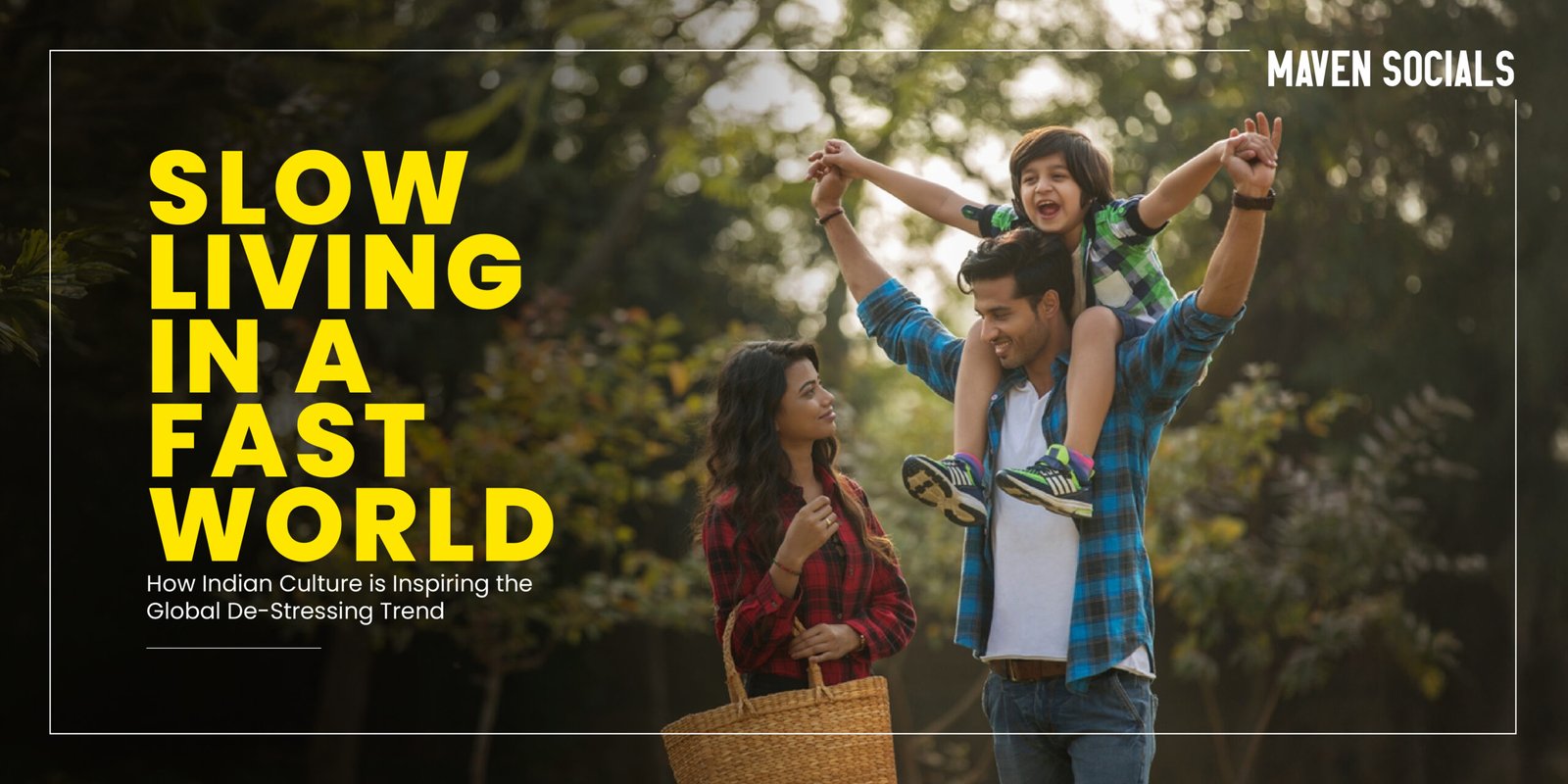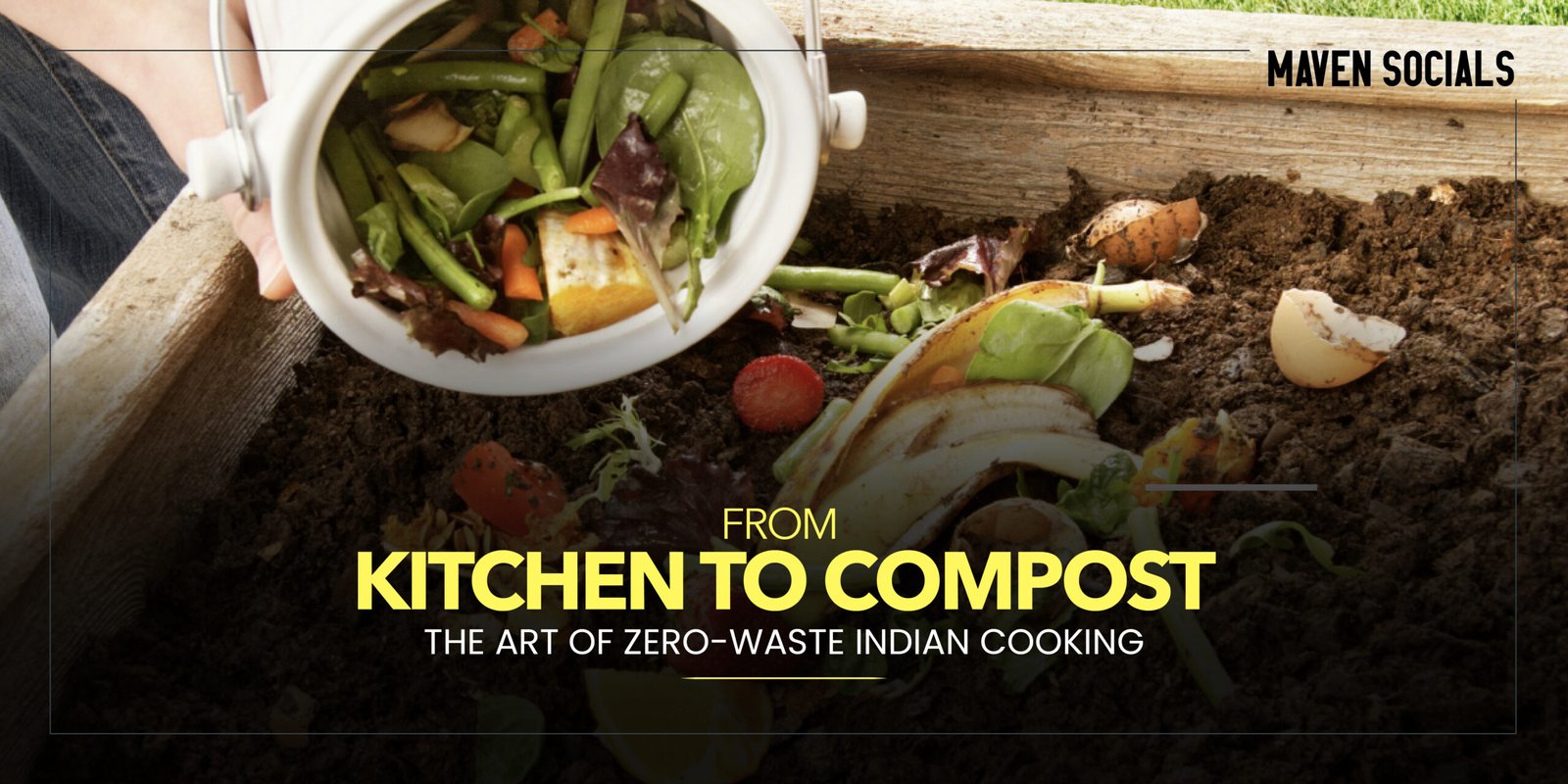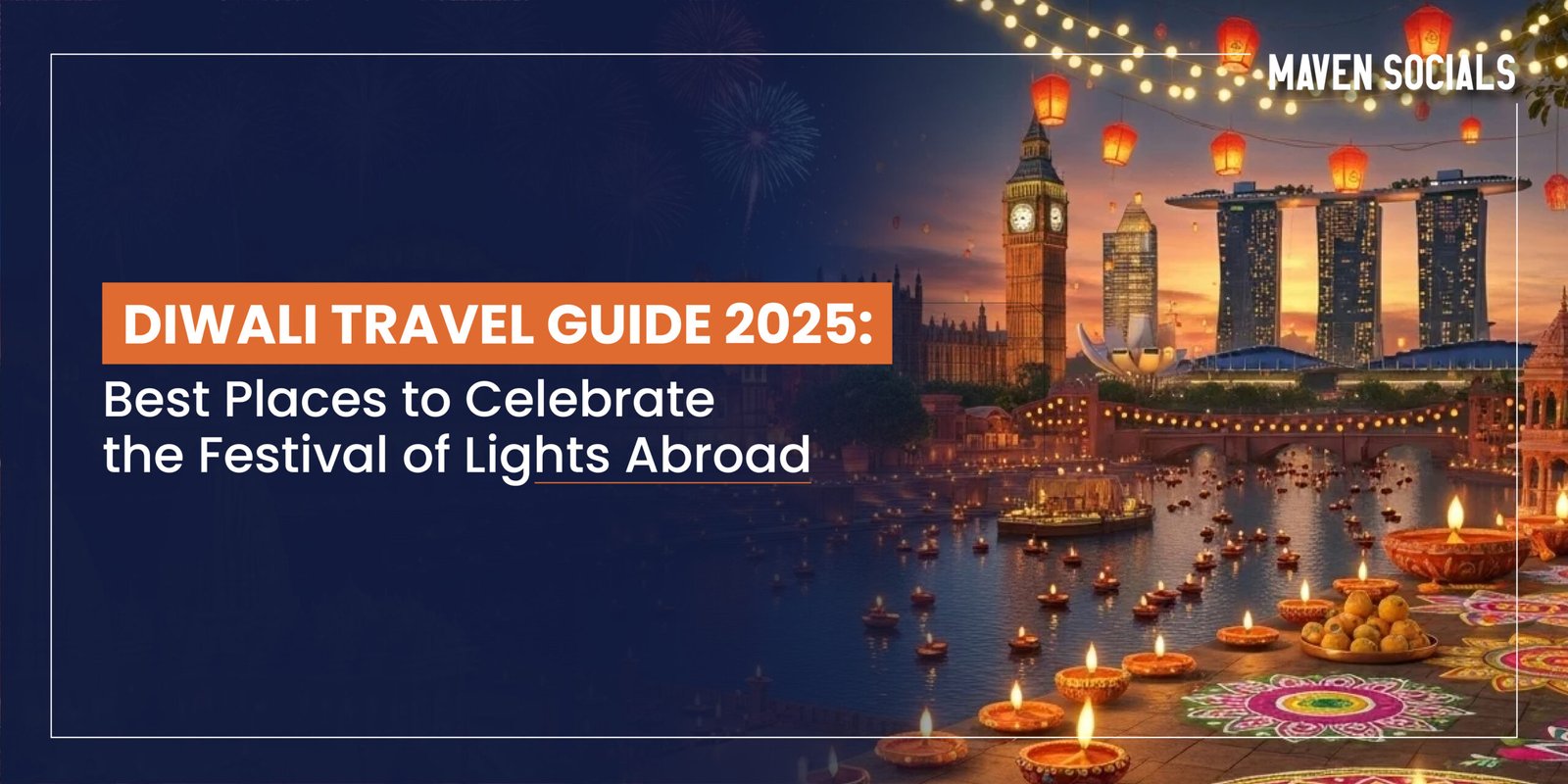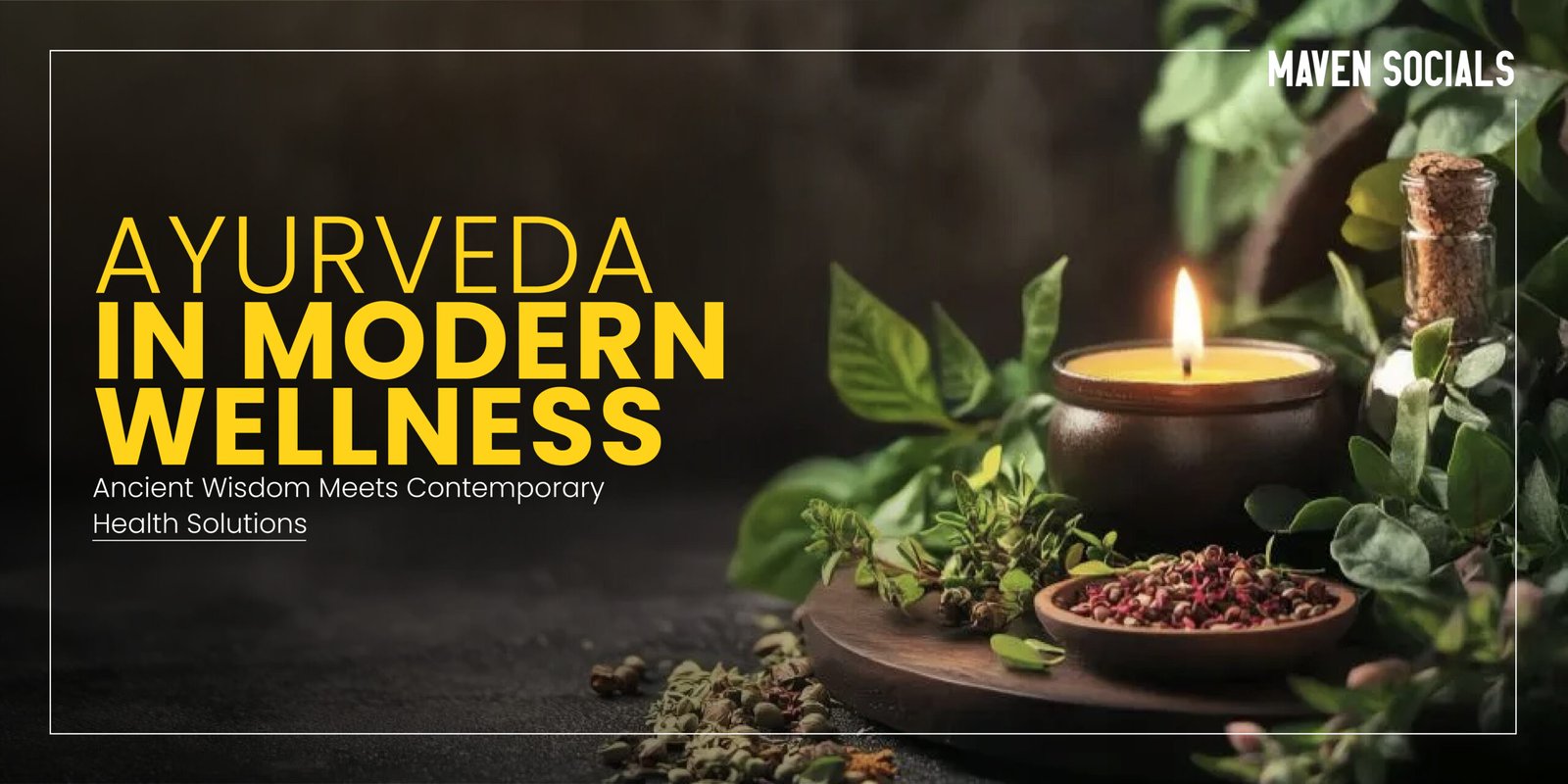In our hyperconnected world where notifications ping every few seconds and productivity culture demands we optimize every moment, a quiet revolution is taking place. People across the globe are turning to an ancient wisdom tradition that predates smartphones by millennia: the Indian culture approach to slow living and intentional living. From Silicon Valley executives practicing Dinacharya to European travelers seeking spiritual tourism experiences in India, this cultural wisdom is becoming the antidote to modern burnout.
As our collective stress levels soar and mental health challenges reach epidemic proportions, traditional Indian practices offer a roadmap back to balance. This isn’t about cultural appropriation or quick fixes—it’s about understanding timeless principles that prioritize being over doing, connection over consumption, and rhythm over rush.
The Ancient Art of Dinacharya: Your Daily Reset Button
Dinacharya, literally meaning “daily routine” in Sanskrit, forms the backbone of Ayurvedic lifestyle philosophy. Unlike rigid scheduling or productivity hacking, this practice focuses on aligning your daily rhythm with natural cycles. Think of it as a gentle framework rather than a strict timetable.
The beauty of Dinacharya lies in its adaptability to modern life. You don’t need to wake up at 4 AM or meditate for hours. Instead, start with these simple, non-overwhelming applications:
Morning Rituals Without the Overwhelm: Begin with just 10 minutes of intentional morning time. This could be drinking warm water with lemon, practicing three deep breaths, or simply sitting quietly before checking your phone. The key is consistency over perfection.
Natural Energy Mapping: Traditional Indian wisdom recognizes that different times of day favor different activities:
- Use the focused morning hours (6-10 AM) for your most important work
- Embrace the active midday energy (10 AM-2 PM) for meetings and social interactions
- Allow the evening (6-10 PM) to wind down naturally
Digital Sunsets: Ancient texts emphasize the importance of preparing for rest as the sun sets. Create a modern version by establishing a “digital sunset”—a time when screens go off and slower activities begin. This practice has shown remarkable results in improving sleep quality and reducing anxiety.
The goal isn’t to recreate an ancient lifestyle wholesale, but to extract the wisdom that serves our contemporary needs. Dinacharya teaches us that sustainable wellness comes from small, repeated actions rather than dramatic overhauls.
Slow Food Revolution: Rediscovering Mindful Nourishment
Long before “farm-to-table” became a restaurant buzzword, Indian food culture embodied the principles now driving the global slow food movement. Traditional Indian cooking practices offer profound lessons in mindful eating that directly combat the stress and disconnection of fast-paced living.
The Meditation of Cooking: In traditional Indian households, cooking is viewed as a meditative practice. The act of grinding spices by hand, stirring with intention, and preparing meals with awareness transforms a daily necessity into a stress relief ritual. You don’t need a complete kitchen overhaul—try spending five extra minutes mindfully preparing one component of your meal, focusing on the colors, textures, and aromas.
Seasonal Wisdom for Modern Plates: Indian cuisine has always celebrated seasonal eating, long before nutritionists promoted the health benefits of local produce. Spring brings cooling foods like cucumber and mint, while winter calls for warming spices like ginger and cinnamon. This approach reduces decision fatigue while naturally supporting your body’s changing needs throughout the year.
The Social Sacred: Traditional Indian meals emphasize community and gratitude. Even in busy modern life, you can incorporate these elements by:
- Putting away devices during meals
- Taking a moment of gratitude before eating
- Sharing at least one meal per day with others when possible
Spice as Medicine: Indian cooking treats spices not just as flavor enhancers but as daily medicine. Turmeric for inflammation, cumin for digestion, and cardamom for stress relief—these aren’t just ingredients but tools for maintaining balance. Start by adding one stress-reducing spice to your daily routine and notice the subtle but cumulative effects.
Spiritual Tourism: Journeys That Heal
The concept of pilgrimage in Indian culture offers a powerful model for travel that genuinely reduces stress rather than adding to it. Unlike vacation culture focused on packed itineraries and social media moments, spiritual tourism emphasizes inner journey alongside outer exploration.
Pilgrimage Principles for Any Traveler: You don’t need to visit India to apply these concepts. The key principles include:
- Traveling with intention rather than impulse
- Choosing quality of experience over quantity of destinations
- Building in time for reflection and processing
Nature as Temple: Indian spiritual tradition recognizes natural spaces as sacred. This perspective transforms hiking, beach walks, or even urban park visits into opportunities for restoration. The practice involves moving slowly enough to actually notice your surroundings and treating natural spaces with the reverence typically reserved for formal places of worship.
Digital Detox Through Sacred Pause: Traditional pilgrimage involves periods of silence and disconnection. Modern travelers can incorporate “sacred pauses”—designated times during travel when devices are put away and full attention is given to the present moment. This practice often provides the mental health reset that people seek from vacation but rarely achieve.
From Doing to Being: The Philosophy of Enough
Perhaps the most radical gift of Indian wisdom to our achievement-obsessed culture is the concept that you are enough, exactly as you are, without needing to constantly optimize, improve, or acquire more. This philosophical shift from “doing” to “being” addresses the root cause of much modern stress.
Minimalism with Soul: While Western minimalism often focuses on aesthetics and efficiency, Indian-inspired simple living emphasizes contentment and gratitude for what you already have. This isn’t about having less stuff—it’s about wanting what you have and finding richness in simplicity.
The Practice of Santosha: This Sanskrit concept, often translated as contentment, involves finding satisfaction in the present moment rather than constantly seeking the next achievement or acquisition. Practically, this might mean:
- Taking time to appreciate completed tasks before moving to the next item on your list
- Practicing gratitude for current circumstances while still working toward goals
Sacred Rest: Indian culture recognizes rest not as laziness but as a necessary component of a balanced life. This challenges the productivity culture that views every moment as an opportunity for optimization. Building guilt-free rest into your routine—whether it’s afternoon tea without multitasking or Sunday mornings without agenda—directly counters burnout culture.
Integrating Ancient Wisdom in Modern Life
The global embrace of these Indian-inspired practices isn’t about abandoning modern conveniences or adopting an entirely different lifestyle. Instead, it’s about selectively integrating wisdom that addresses the specific challenges of contemporary living: overwhelm, disconnection, and the constant pressure to do more.
Start small and build gradually. Choose one practice that resonates most strongly—whether it’s a simple morning routine, mindful eating once a week, or incorporating more intentional rest into your schedule. The goal is sustainable integration rather than dramatic transformation.
As more people discover the profound stress relief that comes from slowing down and honoring natural rhythms, these ancient practices are proving their relevance for modern challenges. In a world that often feels like it’s spinning out of control, Indian wisdom offers not just techniques but a different way of being—one that prioritizes well-being over productivity and connection over consumption.
The slow living movement isn’t about moving backwards; it’s about moving forward with greater intention, wisdom, and care for our collective well-being.
Frequently Asked Questions (FAQs)
1. What is slow living and how does Indian culture inspire it?
Slow living is a lifestyle philosophy that emphasizes intentional, mindful living over constant productivity and rushing. Indian culture has inspired the global slow living movement through ancient practices like Dinacharya (daily routines aligned with natural cycles), mindful eating traditions, and the philosophy of Santosha (contentment). These practices prioritize being over doing, connection over consumption, and natural rhythms over rushed schedules. From Silicon Valley to Europe, people are adopting these timeless principles for stress relief and better mental health, finding balance in our hyperconnected world through traditional Indian wisdom.
2. What is Dinacharya and how can I practice it in modern life?
Dinacharya means “daily routine” in Sanskrit and is a core practice of Ayurvedic lifestyle philosophy. Unlike rigid scheduling, it focuses on aligning your daily rhythm with natural cycles. You can start practicing Dinacharya by incorporating simple habits: begin with 10 minutes of intentional morning time (warm water with lemon, deep breathing), use focused morning hours (6-10 AM) for important work, embrace active midday energy (10 AM-2 PM) for social interactions, and establish a “digital sunset” for better sleep. This ancient wellness practice teaches that sustainable health comes from small, repeated actions rather than dramatic overhauls, making it perfect for modern stress relief.
3. How does mindful eating from Indian culture reduce stress?
Mindful eating practices from Indian culture transform cooking and dining into stress relief rituals. Traditional Indian households view cooking as a meditation practice—grinding spices by hand and preparing meals with awareness. Key practices include seasonal eating (cooling foods in summer, warming spices in winter), using spices as medicine (turmeric for inflammation, cardamom for stress), putting away devices during meals, and practicing gratitude before eating. These elements directly combat the stress and disconnection of fast-paced living, supporting both physical and mental health through intentional nourishment and community connection.
4. What is spiritual tourism and how does it differ from regular travel?
Spiritual tourism, rooted in Indian culture’s pilgrimage traditions, focuses on inner journey alongside outer exploration. Unlike vacation culture with packed itineraries and social media moments, spiritual tourism emphasizes quality of experience over quantity of destinations, traveling with intention rather than impulse, and building in reflection time. Key practices include treating natural spaces as sacred temples, incorporating “sacred pauses” where devices are put away, and moving slowly enough to notice surroundings. This approach provides genuine stress relief and mental health benefits that typical vacations rarely achieve, offering the restoration people truly seek from travel.
5. How can practicing Santosha (contentment) improve mental health in modern life?
Santosha, a Sanskrit concept from Indian culture, means finding contentment in the present moment rather than constantly seeking the next achievement. This practice directly addresses modern stress by shifting focus from “doing” to “being.” Practical applications include appreciating completed tasks before moving to the next item, practicing gratitude for current circumstances while working toward goals, and building guilt-free rest into routines. This challenges productivity culture and counters burnout by recognizing that you are enough as you are. Combined with slow living principles, Santosha offers a philosophical framework for sustainable wellness and improved mental health in our achievement-obsessed world.












